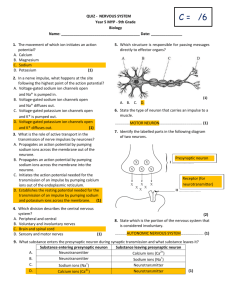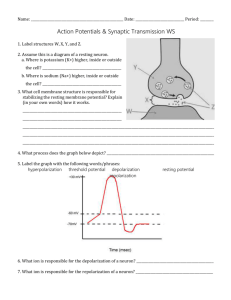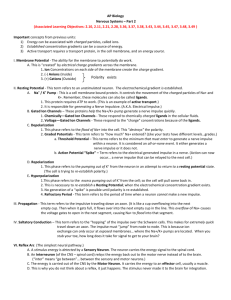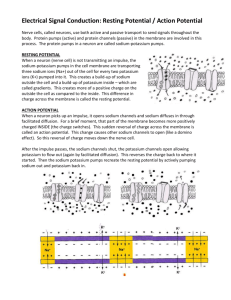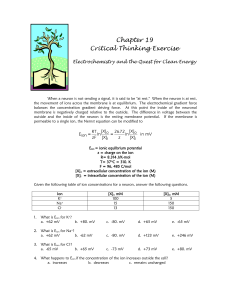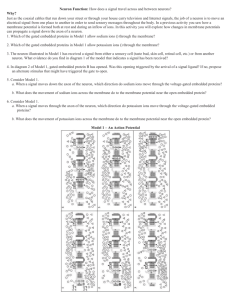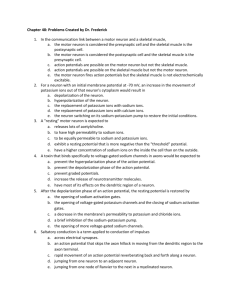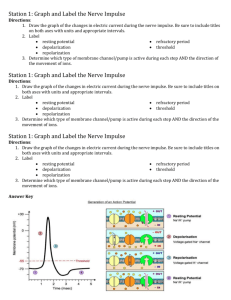Definition and Description
advertisement
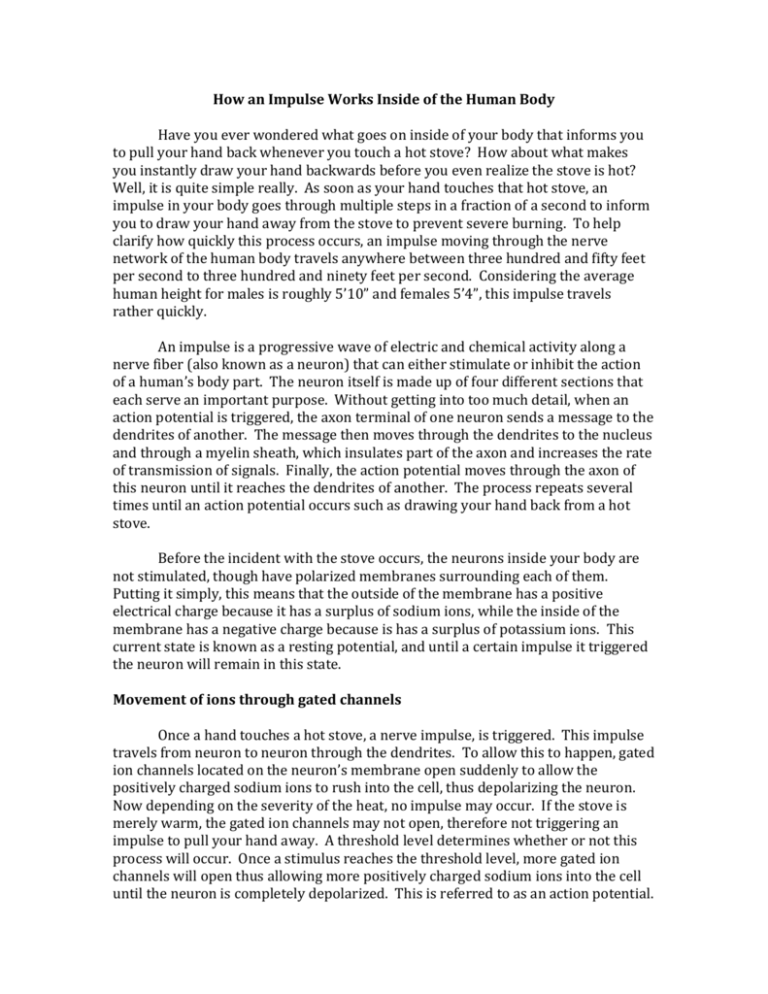
How an Impulse Works Inside of the Human Body Have you ever wondered what goes on inside of your body that informs you to pull your hand back whenever you touch a hot stove? How about what makes you instantly draw your hand backwards before you even realize the stove is hot? Well, it is quite simple really. As soon as your hand touches that hot stove, an impulse in your body goes through multiple steps in a fraction of a second to inform you to draw your hand away from the stove to prevent severe burning. To help clarify how quickly this process occurs, an impulse moving through the nerve network of the human body travels anywhere between three hundred and fifty feet per second to three hundred and ninety feet per second. Considering the average human height for males is roughly 5’10” and females 5’4”, this impulse travels rather quickly. An impulse is a progressive wave of electric and chemical activity along a nerve fiber (also known as a neuron) that can either stimulate or inhibit the action of a human’s body part. The neuron itself is made up of four different sections that each serve an important purpose. Without getting into too much detail, when an action potential is triggered, the axon terminal of one neuron sends a message to the dendrites of another. The message then moves through the dendrites to the nucleus and through a myelin sheath, which insulates part of the axon and increases the rate of transmission of signals. Finally, the action potential moves through the axon of this neuron until it reaches the dendrites of another. The process repeats several times until an action potential occurs such as drawing your hand back from a hot stove. Before the incident with the stove occurs, the neurons inside your body are not stimulated, though have polarized membranes surrounding each of them. Putting it simply, this means that the outside of the membrane has a positive electrical charge because it has a surplus of sodium ions, while the inside of the membrane has a negative charge because is has a surplus of potassium ions. This current state is known as a resting potential, and until a certain impulse it triggered the neuron will remain in this state. Movement of ions through gated channels Once a hand touches a hot stove, a nerve impulse, is triggered. This impulse travels from neuron to neuron through the dendrites. To allow this to happen, gated ion channels located on the neuron’s membrane open suddenly to allow the positively charged sodium ions to rush into the cell, thus depolarizing the neuron. Now depending on the severity of the heat, no impulse may occur. If the stove is merely warm, the gated ion channels may not open, therefore not triggering an impulse to pull your hand away. A threshold level determines whether or not this process will occur. Once a stimulus reaches the threshold level, more gated ion channels will open thus allowing more positively charged sodium ions into the cell until the neuron is completely depolarized. This is referred to as an action potential. After the inside of the cell becomes flooded with positively charged sodium ions, the gated ion channels on the inside of the membrane (these gated ion channels are different from the sodium ion channels) open up to allow the negatively charged potassium ions to migrate outside of the membrane. As soon as these potassium gates open, the sodium gates close to ensure that no more sodium ions will transfer across the membrane. This process is known as repolarization. Repolarization occurs in order to restore an electrical balance throughout the neuron. Hyperpolarization Less than two milliseconds after the potassium channel has opened, once enough potassium has crossed through the gated ion channel, the potassium gates close. At this moment, there are slightly more potassium on the outside of the membrane than sodium on the inside. This causes the membrane potential to drop slightly lower than the resting potential (where it was prior to touching the stove), which is a process called hyperpolarization. Over a very short amount of time, however, after the impulse has traveled through the neuron and onto the next neuron, the action potential is officially over and the cell membrane returns to its resting potential. Refractory Period The final step that occurs is referred to as the refractory period. Throughout this process, the sodium and potassium ions return back to their respective sides of the membrane (remember they switched sides in order to depolarize and repolarize the neuron). During the refractory period, the neuron is sort of ‘on hold’ in a way that it will not respond to any incoming stimuli. Luckily, humans have approximately one hundred billion neurons merely located in the brain so numerous other neurons remain free to receive incoming stimuli. After a couple more milliseconds once the sodium and potassium ions return to their respective sides, the neuron returns to its polarized state. At this point, the neuron is considered at its resting potential, where it remains until another impulse comes along and the process repeats. Conclusion The human body is magnificent. It can take a multi step function in which thousands of molecules move from one membrane to another across hundreds of neurons and complete this process in a matter of a fraction of a second without ever messing up. Imagine what would happen if a person’s body did not react to a severe burn on their hand one time because a neuron was unable to trigger a response. It is clear as time goes on that we, as humans are an absolutely incredible species.

